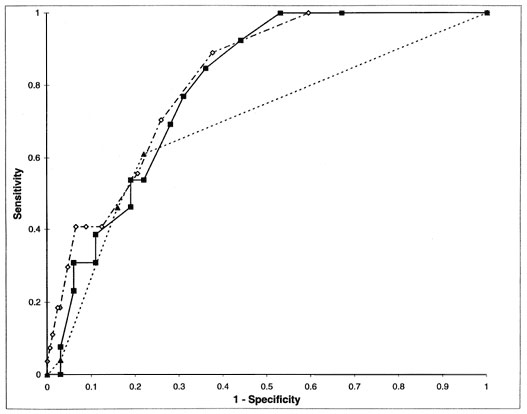Volume 6, Number 3—June 2000
Research
Using Remotely Sensed Data To Identify Areas at Risk for Hantavirus Pulmonary Syndrome
Figure 2

Figure 2. Receiver Operator Characteristic (ROC) function of the logistic model for HPS risk in the training area (closed squares) and overall for 1992 (open diamonds) as the threshold for predicted case households was varied from p = 0.00 - 0.85 in 0.05 increments. The ROC for normalized difference vegetation index model (triangles) had p values of 0.00 to 0.40 and multiple points occurred together. The early rapid loss of sensitivity for the NDVI model was the result of poor model specification.
Page created: December 16, 2010
Page updated: December 16, 2010
Page reviewed: December 16, 2010
The conclusions, findings, and opinions expressed by authors contributing to this journal do not necessarily reflect the official position of the U.S. Department of Health and Human Services, the Public Health Service, the Centers for Disease Control and Prevention, or the authors' affiliated institutions. Use of trade names is for identification only and does not imply endorsement by any of the groups named above.